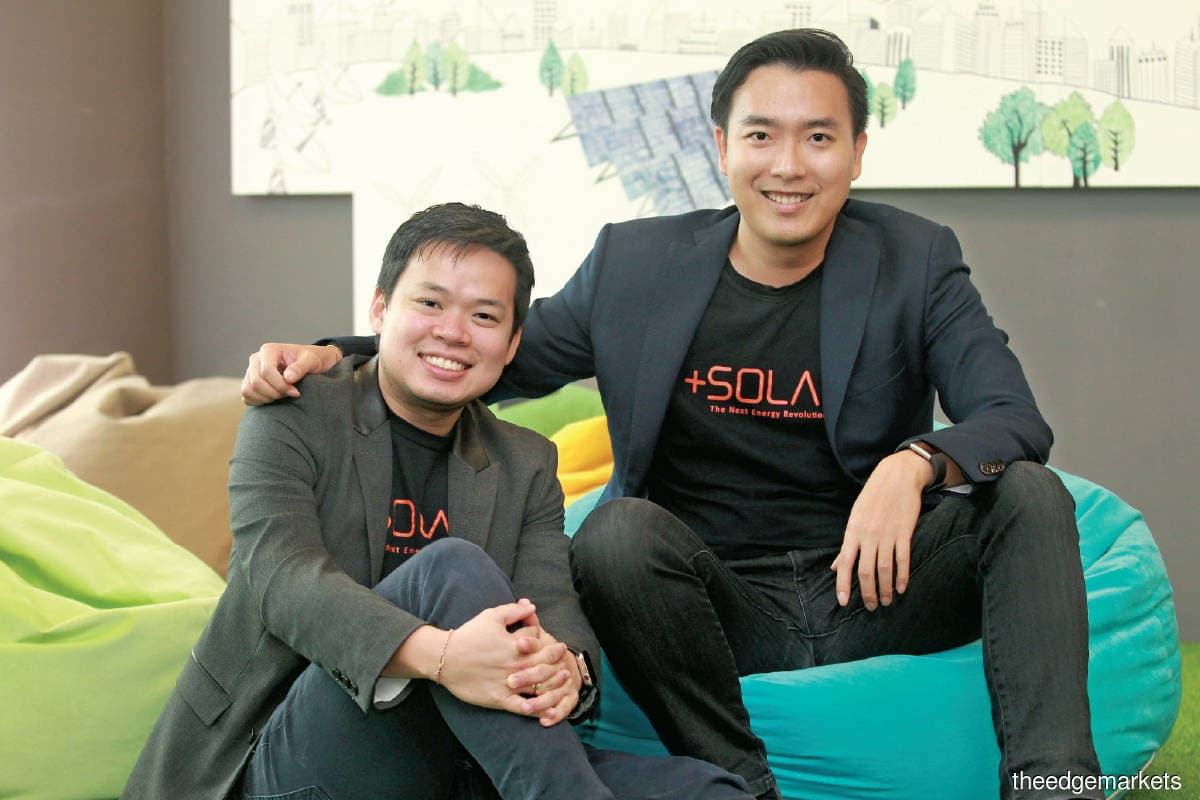
This article first appeared in Digital Edge, The Edge Malaysia Weekly on October 26, 2020 - November 1, 2020
Just as we measure various health-related metrics such as the number of steps we have taken, our heart rate and our sleep patterns with our smartwatches, the founders of Plus Solar Systems Sdn Bhd want to do the same for buildings and machinery. They aim to measure the energy flow in these structures and make the necessary adjustments to maximise efficiency.
The solar energy company managed to do so in 2017 by setting up Source, its energy performance management system that takes advantage of advancements in the Internet of Things (IoT) and machine learning technology.
Source allows building or machinery owners to visualise and control their energy use in real time on a computer or app. It collects data from sensors installed in buildings or machinery, analyses it and comes up with solutions to help customers save more energy or increase efficiency.
Ko Chuan Zhen, co-founder and CEO of Plus Solar, believes this will be the next step in the global energy revolution. “The first phase of the global energy revolution was all about infrastructure transformation to accommodate energy generation from solar, wind and other renewable sources,” he says.
“The next step is digital transformation. This means we can capture energy data from buildings, analyse it and provide a diagnosis of energy consumption for the building owner.
“People don’t talk much about digitalisation in energy. So, we want to raise awareness that a digitalised energy system can generate important insights and increase productivity for businesses.”
Smart energy management platforms are different from current building management systems, say the founders of Plus Solar. Generally, the latter captures data but does not provide analyses or suggestions to increase efficiency. Meanwhile, solutions such as Source aim to not only collect data but also provide solutions in areas like energy savings and maintenance of equipment.
The digitalisation of energy systems in individual buildings can be seen as a step towards creating smart cities and a smart energy grid, as well as promoting the Fourth Industrial Revolution (IR 4.0).
“At first, we just wanted to help our customers save energy with solar-powered systems and Source. But we realised that this solution could move the industry forward because our solution goes beyond just energy savings. We want to help our customers improve their production yield and efficiency,” says Ryan Oh, co-founder and chief technology officer of Plus Solar.
Future possibilities
Source offers three kinds of services — Navi provides customers with a high-level overview of a building’s energy data, Kai manages the energy demand and consumption of industrial buildings, and Gabi allocates and readjusts the energy consumption of commercial buildings. Those who do not have solar power systems can also use Source.
“We sell Source as a service, so we charge a monthly fee. It covers the IoT hardware and software services. Depending on how many units the client requires, the price starts from RM499 per month. One unit refers to the use of one smart meter or sensor. We can also work around a set budget to monitor different equipment or buildings,” says Oh.
Since Source is both a hardware and software solution, many features of both kinds can be added to the platform going forward. One feature that the company is interested in adding to Source is battery solutions. This will enable building owners to load the excess electricity generated by solar power systems during peak hours into the battery storage, so it can be used at other times.
Plus Solar is also hoping to introduce blockchain and peer-to-peer (P2P) trading of energy into Source. P2P trading of energy is a solution to decentralise energy generation, whereby electricity is no longer transmitted from a central point to substations.
As more people generate their own electricity from solar power systems, it could be possible for them to sell their excess electricity to their neighbours. In 2019, the Sustainable Energy Development Authority announced plans to launch a pilot P2P energy trading project for eight months.
If P2P trading of energy is implemented, blockchain technology can be used to keep track of all the transactions. “Blockchain is a smart ledger system that keeps track of credit and debit transactions,” Oh explains.
“So, when I transfer a unit of energy to you, it is recorded in a smart contract. This can be used to track how much energy one has transferred to another as well as the payments required. When things get crowded, this kind of technology can be put to good use without relying on a central server.”
Save by subscribing to us for your print and/or digital copy.
P/S: The Edge is also available on Apple's AppStore and Androids' Google Play.

